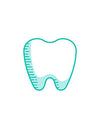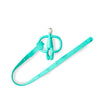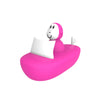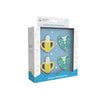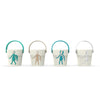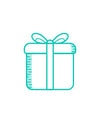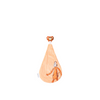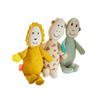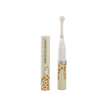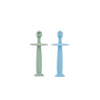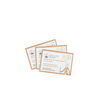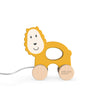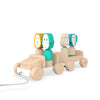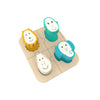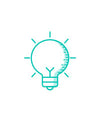A Beginners Guide to Nappies: Disposable or Reusable, Which is Best?
Nappies, diapers or whatever you call them can be a bit of a minefield. There are so many options to choose from that it’s easy to get a bit overwhelmed, especially as a first time parent.
I wish I’d been more clued-up about all the options out there when I had my first born, so I thought writing a mini-guide would be helpful for anyone having the same conundrum.
A beginners guide to nappies
Firstly, there are two main differences between the types of nappies that are available. They are either disposable and only suitable for wearing once, or they are reusable - meaning they can be used, washed and then used again until your baby needs a bigger size.
To make things more complicated, there are a range of different styles of nappies in both reusable and disposable designs.
Some parents swear by reusable nappies and some wouldn’t consider using anything but disposables, whilst other parents might use a mixture of both. Here are a few pros and cons of each.
Disposable nappies: pros and cons
Pros
- Smelly, used nappies can be put in the bin immediately, never to be seen (by you) again.
- They’re convenient for if you’re travelling or on the move and have no access to washing facilities.
- They are easy to change, often with sticking strips at the back and front - no folding required.
- They’re extremely absorbent with an inner layer helping to keep as much moisture as possible away from your little one’s skin, avoiding nappy rash.
- The extra absorbency means less changes per day.
- They rarely leak.
- You can get biodegradable disposable nappies (although they are not usually completely biodegradable, only parts of them are).
Cons
- Many disposable nappies aren’t biodegradable and don’t break down in landfill. As nappies account for millions of tonnes of landfill waste per year, it’s not the most environmentally friendly option.
- As you can only use them once, you may spend more money in the long term.
- The gels and chemicals in disposable nappies have never been proven to cause any harm in studies, however some parents might feel uncomfortable using them on their babies skin.
- Some babies can be allergic to these gels and chemicals which can cause nappy rash to occur.
- Potty training can be harder, as disposable nappies are so absorbent, babies don’t get too uncomfortable so might not feel the need to stop using them.

Reusable nappies: pros and cons
Pros
- If you wash your nappies considerately (on a lower temperature, air dry and with a full nappy washing load) then nappies made from natural materials are kinder to the environment in the long term.
- You can choose between materials like cotton, terry cloth or flannel nappies that come as all-in-one nappies or as a liner you can simply take out and wash.
- You will spend less money in the long run during the years your baby wears nappies as although reusables are more expensive individually, you’ll need to buy less of them.
- You can save reusable nappies for any other children you have in future, or pass them on to friends once your little one has grown out of them.
- There aren’t as many chemicals and dyes used in reusable nappies - although they haven’t been proven to cause any harm, reusable nappies are less likely to trigger mild allergic reactions.
- As you may be changing your baby more frequently, their skin could stay drier which could potentially mean less nappy rashes long term.
Cons
- Baby poo isn’t exactly pleasant, especially once they start eating solid food. Keeping them in a washing basket (even in their own dedicated washing basket) may not smell agreable and it may also not be practical to wash them immediately after use.
- If you’re travelling or on the move, you won’t have access to washing facilities so will need to hang on to soiled and smelly nappies for the duration of your journey.
- As reusable nappies are less absorbent, if you don’t change them more frequently it could result in your baby getting nappy rash more often.
- You can’t use many diaper rash creams and ointments when using cloth nappies.
Whichever you choose, there are plenty of options in both camps. Find the solution that’s best for you and your little one but remember, testing the different options is usually the best way to find out what that is!

